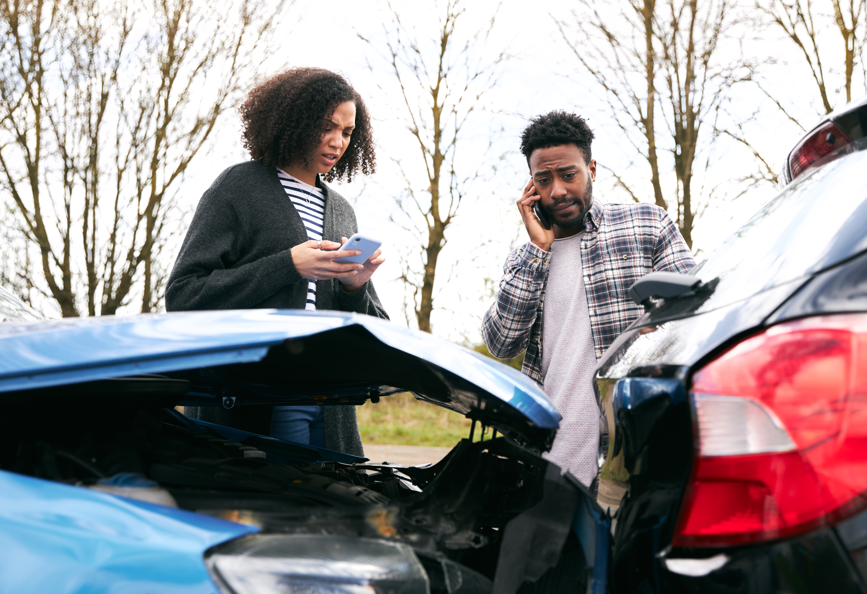
When you’re injured in a car accident while backing up in Arizona, figuring out who is at fault can be a complex process.
This involves determining fault, understanding comparative negligence rules, and knowing the role of law enforcement in accident reports.
Determining Fault in Backing Up Accidents
Fault in backing up accidents depends on various factors.
In Arizona, the driver who is backing up usually carries a higher percentage of fault.
This is because they must ensure the path is clear.
If another vehicle or pedestrian is hit while you are reversing, you may be liable.
Witnesses play a key role in these cases.
Their statements can help clarify who was responsible.
Photos from the scene also provide important evidence.
Arizona’s Comparative Negligence Rule
Arizona follows comparative negligence laws.
This means more than one party can share fault for an accident.
Each party’s percentage of fault affects how much they owe for damages.
Example: If you are 70% at fault and the other driver is 30% at fault, your compensation will be reduced by your percentage of fault.
So, if damages are $10,000, you would receive $3,000.
Police Accident Reports
Law enforcement officers are crucial in documenting accident scenes.
They collect information, interview witnesses, and write detailed accident reports.
These reports often influence insurance claims and legal decisions.
Accident reports include data about vehicle positions, damage, and weather conditions.
Having a police report is valuable in disputes about liability.
Always request a copy of the report for your records.
It doesn’t matter if you were injured in Mesa, Scottsdale or even Chandler, The Law Gang can help.
Legal Help After Back-Up Collision
If you’re injured in a back-up collision in Arizona, you may have legal recourse.
You might file a personal injury lawsuit or engage in the settlement process.
There are certain exceptions and special scenarios to consider.
Filing a Personal Injury Lawsuit
To seek compensation, you could file a personal injury lawsuit.
Hiring a personal injury lawyer is vital.
They help you navigate the complex legal system, gather evidence, and represent you in court.
You must show the other driver was negligent.
Negligence means they failed to act with reasonable care, causing your injury.
In Arizona, if you are partly at fault, you may still recover damages.
This is known as comparative negligence.
Your compensation may be reduced by your percentage of fault.
Understanding the Settlement Process
Many cases are settled out of court. Settlements can save time and money.
After filing a claim, both sides may negotiate a settlement amount.
An attorney skilled in this area can negotiate on your behalf.
They aim to get you fair compensation for medical expenses, lost wages, and pain and suffering.
If both parties agree on a settlement, you won’t go to trial.
Ensure any agreement fairly covers your damages.
Exceptions and Special Scenarios in Lawsuits
Certain situations may change how you proceed.
If a collision results in death, you might file a wrongful death claim.
This is different from a personal injury lawsuit and seeks compensation for emotional and financial loss.
In cases involving comparative negligence, the amount you can recover depends on your share of fault.
Your lawyer can explain how this affects your claim.
Another special scenario is if the driver at fault is uninsured or underinsured.
Here’s a summary table for quick reference:
| Scenario | Consideration |
|---|---|
| Injury and Negligence | Prove the other driver’s negligence |
| Comparative Negligence | Compensation reduced by your fault percentage |
| Wrongful Death | File a claim for emotional and financial losses |
| Settlement with Insurance Companies | Negotiation for fair compensation |
Legal processes can be challenging.
Proper legal guidance ensures you understand your rights and helps you get what you deserve.
Dealing with Insurers
After a car accident in Arizona, you need to deal with your insurance company.
This can involve negotiations, understanding different types of coverage, and seeking compensation for damages and medical costs.
Negotiating with Insurance Companies
When dealing with insurance companies, you should be prepared.
Gather evidence from the accident scene, like photos and witness statements.
Keep records of medical bills, repair costs, and any other expenses.
Be honest and clear in your communication and be careful about giving a recorded statement.
Don’t settle too quickly; sometimes the first offer is lower than what you deserve.
Consult a lawyer if needed to help you get fair compensation.
Uninsured & Underinsured Motorist Coverage
If the person who hit you does not have insurance (or enough insurance), you may need to rely on your own auto insurance.
Arizona law requires insurers to offer Uninsured and Underinsured Motorist Coverage.
This can help cover your medical costs and damages when the other driver is at fault but lacks sufficient insurance.
Check your policy to know your coverage limits.
Compensation for Damages and Medical Costs
Compensation can include repairs to your vehicle, rental car costs, and medical expenses.
Document everything related to the accident and your injuries.
This can be helpful when filing a claim.
Your insurance company may pay for these costs, or you might need to get compensation from the other driver’s insurance.
If negotiations stall, legal action might be required.
Compensation for Injuries
If you were injured in a car accident while backing up in Arizona, you may be able to recover damages for your injuries and losses.
It’s important to understand how to calculate your compensation and claim the relevant damages.
Calculating Compensation for Pain and Suffering
When you endure pain and suffering due to an accident, you might be eligible for compensation.
Insurance companies often use a multiplier method.
They calculate medical expenses and multiply by a number, usually between 1.5 and 5, based on the severity of your injury.
For example, if your medical costs are $5,000 and the multiplier is 3, then you could receive $15,000.
Another method is the per diem method, which assigns a daily rate for your pain and suffering.
This daily rate is then multiplied by the number of days you are affected.
Claiming Lost Wages and Emotional Distress
If you miss work due to your injuries, you can claim lost wages.
First, gather proof of your regular earnings, such as pay stubs and tax returns.
Next, document the time you missed work and calculate the total lost income.
This might include not just your base salary but also any bonuses or overtime you would have earned.
Emotional distress is another area where you might receive compensation.
This covers the psychological impact of the accident, such as anxiety, depression, or post-traumatic stress disorder (PTSD).
You may need to provide medical records or a letter from a therapist to support your claim.
By understanding these elements, you can better navigate the process of recovering damages.
Gather Evidence and Witnesses
When you’re injured in a car accident while backing up in Arizona, gathering evidence and witness statements is crucial.
These elements help build your case and support your claim for injuries and damages.
Getting any traffic camera video footage can help, and believe it or not backing up crashes happen often at stop signs, red lights, and normal intersections like –
N 17th street and cashman drive
The Importance of Witness Statements
Witness statements can be vital.
They provide an unbiased account of the accident.
Witnesses can describe how the accident happened, who was involved, and other key details.
After an accident, try to get contact information from any witnesses.
This includes their names, phone numbers, and addresses.
Make sure to ask them to describe what they saw and heard during the incident.
If they are willing, ask them to provide a written statement.
Witnesses can also sometimes provide additional evidence, like photos or videos.
This can be very helpful in showing what happened during the accident.
Documentation and Evidence for Your Claim
Gathering evidence is key to proving your injury claim.
Start by reporting the accident to the police.
Make sure to get a copy of the police report, which will include important details about the crash.
Take photos of the accident scene, vehicle damage, and any visible injuries.
Also, get insurance information from the other driver and any witnesses.
Keep records of all medical treatments and expenses.
This includes doctor visits, medications, therapies, and any other costs related to your injuries.
If possible, consider hiring a car accident lawyer.
They can help gather and present evidence to support your claim.
Having legal help ensures that you don’t miss any important steps in the process.
Safety Measures
Taking precautions when backing up can prevent car accidents and protect pedestrians, children, and bicyclists.
Using safety devices and paying close attention are key steps to reduce risks.
Understanding Back-Up Car Accidents
Car accidents while backing up often happen due to blind spots.
You may not see a pedestrian, child, or bicyclist.
Speeding and distracted driving also increase the danger.
Many common injuries during these accidents include whiplash, broken bones, and bruises.
Property damage can be costly, and even minor collisions can lead to expensive repairs.
Paying attention and driving slowly can help avoid these incidents.
Safety Devices and Ways to Prevent Accidents
Modern cars come with several safety devices to aid in backing up.
Backup cameras give a clear view of what is behind you.
Parking sensors alert you when something is close.
Cross-traffic alerts warn you of approaching vehicles or pedestrians.
To prevent accidents, always check your mirrors and blind spots.
Keep an eye out for children and bicyclists.
Do not rely solely on technology; it is important to manually look around as well. Reducing speed and avoiding distractions also significantly lower the risk of accidents.
By using your safety devices and being cautious, you can make backing up safer for everyone.







